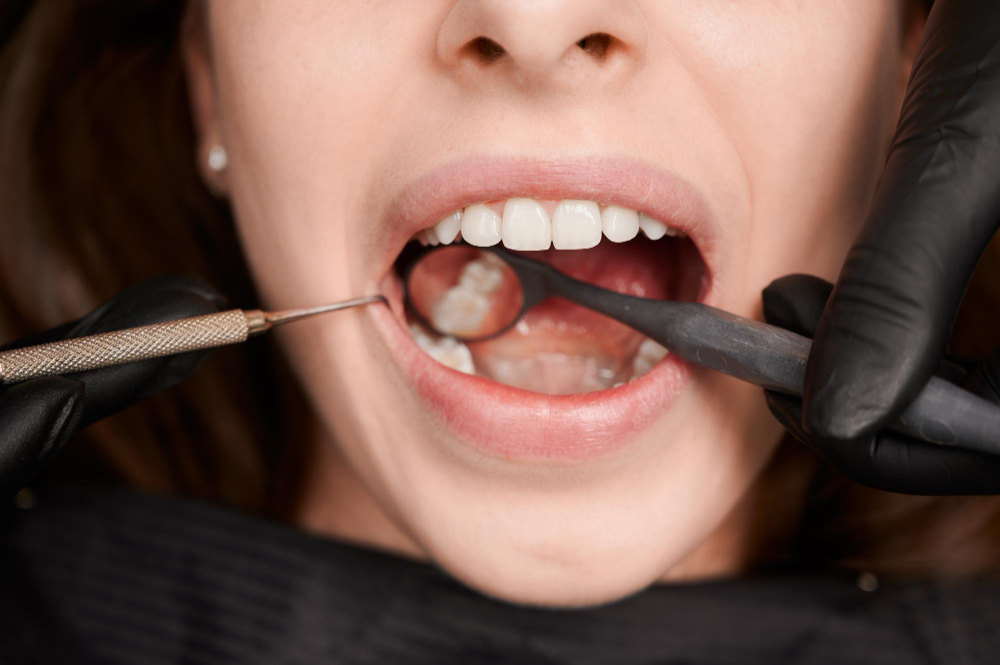Dental restorations have come a long way, from basic metal fillings to advanced, tooth-colored solutions that offer both durability and aesthetics. With several options now available, including fillings, inlays, onlays, and crowns, understanding the right choice for a given situation is essential.
A common comparison that often comes up is inlay vs filling, especially when dealing with moderate tooth damage. Each procedure serves a specific purpose that depends on the location of the tooth, the extent of decay, and long-term goals for strength and appearance. Knowing the differences can help one make informed decisions with their dentist.
Table of Contents
Types of Tooth Restorative Options
Let’s learn about the different types of restorations and when they are used:
Direct Fillings
Dental fillings are procedures used to repair decayed or damaged teeth using a material that is directly molded inside the mouth during a single visit. They perfectly restore mild to moderately damaged teeth.
Common materials used: Composite resin, amalgam, and glass ionomer.
Benefits:
- Completed in a single visit
- Lower cost
- Preserves more of the natural tooth with minimal drilling.
- Easier to repair or re-treat if margins stain or secondary decay develops
Limitations:
- Large fillings can weaken the tooth, increasing the risk of fractures and marginal gaps, which may allow bacteria and debris to enter and cause secondary decay
- Can only last up to 5-7 years with proper care and maintenance
Indirect Fillings (Lab-Prepared Restorations)
Indirect fillings are prepared in a dental lab after an impression of the patient’s mouth is taken. These custom-made restorations are then permanently cemented to the tooth. They are of two types: inlays and onlays.
Inlay
An inlay is a custom-made restoration used to repair a tooth with moderate damage or decay. It’s usually created in a dental lab or with special technology like CAD/CAM. The inlay fits neatly inside the chewing surface of the tooth but doesn’t cover the raised points, called cusps. It’s a good option when the damage isn’t too deep and the cusps are still strong.
When deciding between a dental inlay vs filling, inlays are typically recommended if the cavity is wide but not deep, and the tooth doesn’t need to support a bridge or denture.
Common materials: Porcelain, composite, gold, or e.max.
Benefits:
- CAD/CAM or lab fabrication provides tight margins, reducing the risk of microleakage
- Pressed ceramics and gold offer greater compressive strength than direct composite materials
- Ceramic inlays are more resistant to wear compared to composite fillings
- Can last 10+ years with proper care
Drawbacks:
- Requires at least two visits unless same-day CAD/CAM technology is available
- Typically more expensive than direct fillings
- Involves more tooth preparation than a small direct filling
Onlay
An onlay is a custom-made dental restoration that covers more of the tooth than an inlay but not as much as a full crown. It fits over the chewing surface and includes one or more of the tooth’s raised points, called cusps. That’s why it’s sometimes called a ‘partial crown.’ It’s often used when the damage is too much for an inlay but not enough to need a full crown.
Onlays help protect weak or cracked areas of the tooth and are a good option for back teeth that have undergone a root canal, have large cavities, or have thin cusps. They’re also helpful when the tooth is slightly tilted or when there’s a higher risk of decay, but the tooth is still strong overall. When comparing inlay/onlay vs filling, onlays are often chosen when extra strength and coverage are needed without removing too much natural tooth.
Common materials: Porcelain, composite, gold, or zirconia.
Benefits:
- Offers excellent strength
- Very low internal stress and shrinkage
- Low wear compared to traditional fillings
Limitations:
- More appointments and chair time are required
- Higher costs compared to inlays and fillings
- Technique-sensitive and challenging to repair
Crown
A crown is a full-coverage restoration that completely covers a tooth to restore its size, strength, and shape. Crowns are commonly indicated in cases of extensive decay or significant loss of tooth structure.
It is also recommended after root canal treatment when little healthy tooth remains, or when a tooth is broken, cracked, or worn down. They are also used to protect teeth with large fillings, support dental bridges and implants, cover cosmetic flaws, and reinforce structurally compromised teeth.
Common materials: Zirconia, porcelain-fused-to-metal (PFM), or gold.
Benefits
- Protects weakened or damaged teeth, allowing normal chewing and biting
- With proper care, crowns can last 10–15 years or more
- Matches the shape as well as the color of natural teeth for a seamless look
- Made to match the size and bite of the patient’s original tooth
Limitations
- A good amount of natural tooth structure must be removed
- More expensive than fillings or inlays, especially with premium materials
- Some patients may experience some sensitivity after the procedure
- Crowns may loosen, crack, or wear over time and need replacement
- Once placed, the tooth will always need some form of coverage
Side-by-Side Comparison: Inlays vs Fillings vs Onlay vs Crowns
Here are the key differences across common restorative options to help you make an informed decision:
| Feature | Direct Fillings | Inlay | Onlay | Crown |
| Tooth Conservation | Most conservative | More conservative than onlay/crown | More conservative than the crown | Least conservative; most tooth removal |
| Number of Visits | One | Two (or one with CAD/CAM) | Two (or one with CAD/CAM) | Two |
| Cost | Most affordable | Moderate | Higher | Most expensive |
| Strength & Durability | Good for minor repairs; less durable for large repairs | Greater strength and longevity | Greater strength and longevity | Highest durability and protection |
| Wear Resistance | Less wear-resistant (especially composite) | Better (especially ceramic or gold) | Better (especially ceramic or gold) | Best (especially ceramic or gold) |
| Aesthetics | Can be tooth-colored. Depends on the skillset of the dentist | More aesthetically refined | More aesthetically refined | Most aesthetically refined |
| Repairability | Easiest to repair or replace | Less easily repaired | Less easily repaired | Usually requires full replacement if damaged |
Dental Inlay vs. Filling: Which Is More Suitable?
Selecting the right restoration depends on several factors, including the size of the damage, the location of the tooth, aesthetic concerns, and long-term function. A thorough evaluation by a dentist helps determine the most appropriate approach for each case.
- Size and Location of the Damage
- Small cavities are typically treated with direct fillings.
- Moderate decay with intact cusps may be best managed with an inlay.
- Damaged or weakened cusps often require an onlay for added coverage.
- Extensive structural loss generally calls for a crown to fully restore the tooth.
- Bite Forces and Habits
In patients with bruxism (teeth grinding or clenching), durable materials such as gold or zirconia are recommended. These materials provide greater strength and can be used in inlays, onlays, or crowns to withstand heavy bite pressure.
- Aesthetic Considerations
Tooth-colored ceramics or composites are preferred for their natural appearance and suitability in areas that show when smiling or speaking.
- Budget and Time Constraints
- For a quick and cost-effective solution, fillings are often the first choice.
- For greater durability, longevity, and precision, inlays or onlays may be more appropriate, though they typically involve a higher cost and additional appointment.
- Caries Risk
Patients with a high risk of tooth decay may benefit from restorations that offer better sealing and long-term protection. In such cases, materials that can be paired with fluoride-releasing liners or that provide better marginal integrity, such as inlays or onlays, are often preferred.
Final Thoughts
Choosing the right dental restoration depends on several factors, including the extent of the damage, tooth location, and long-term goals. Understanding the difference between an inlay vs filling can make that decision clearer. A thoughtful discussion with a dentist brooklyn will help identify the most effective and lasting solution.
Ready to Restore Your Smile? Consult With One of the Top Dentists in Brooklyn!
At Brooklyn Blvd Dental, we believe in empowering our patients with the knowledge to make confident decisions about their oral health. Whether you’re considering options like an inlay vs filling or exploring other treatments, we understand that every smile is unique. We’re committed to finding the solution that best preserves your oral health and natural beauty. Our goal is to ensure your experience is comfortable, positive, and results in a healthy, lasting smile.
Contact Brooklyn Blvd Dental today to schedule your consultation! Call us at (763) 533-8669 or visit 5831 Brooklyn Blvd, Brooklyn Center, MN 55429.




